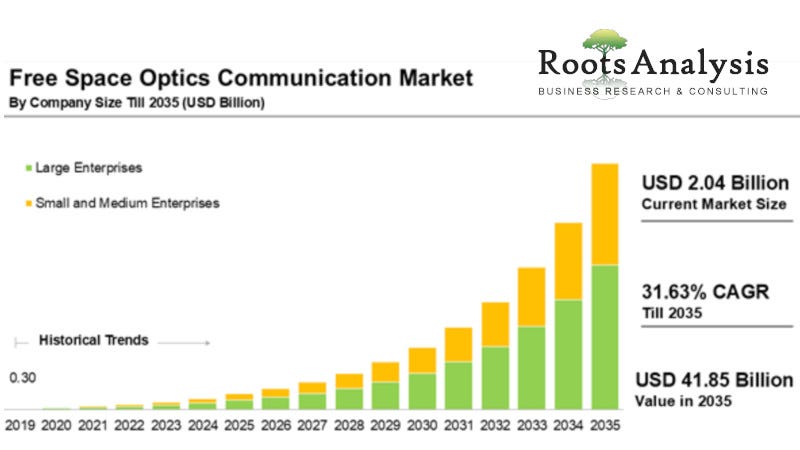Free Space Optical Communication Gains Market Dominance
Increased Military Demand Seen as Primary Market Driver
The global free space optics communication market size is estimated to grow from $2.04 billion in 2025, to $41.85 billion by 2035, at a CAGR of 31.63% during the forecast period, till 2035, according to a new report from Roots Analysis offered by ResearchandMarkets.
The free space laser communication is driven by the increase in demand for high-speed dat…
Keep reading with a 7-day free trial
Subscribe to The Journal of Space Commerce to keep reading this post and get 7 days of free access to the full post archives.



